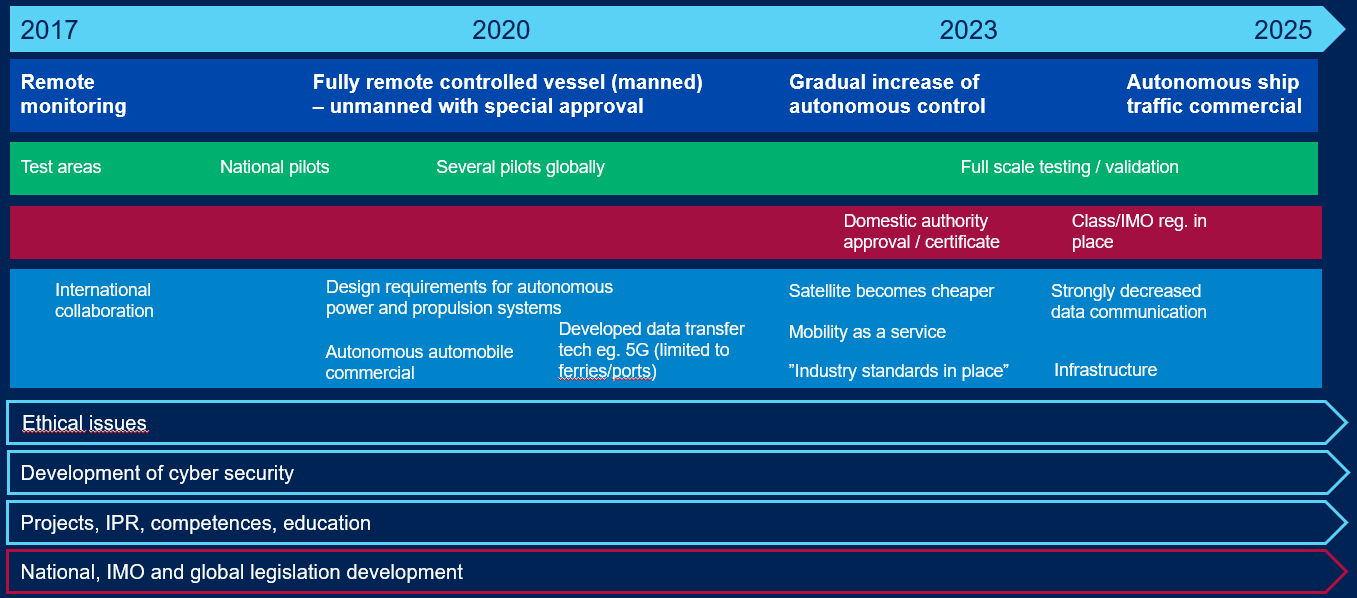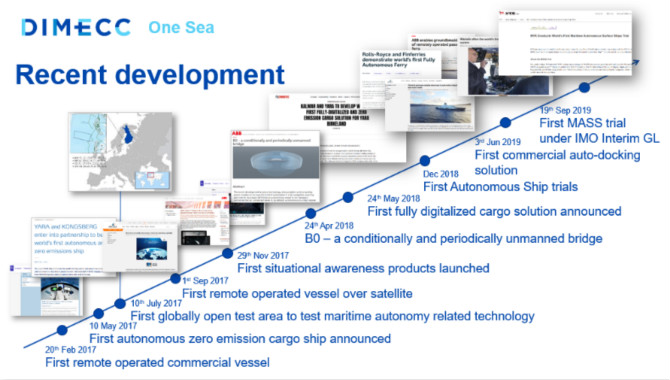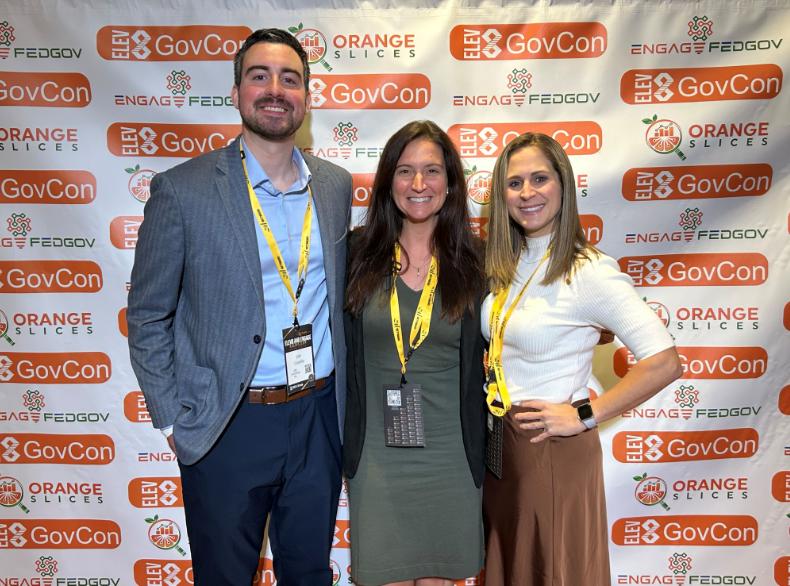Delivering an autonomous maritime transport system by 2025 will rely on "collaboration without borders" between major players from the international digital, communications and shipping sectors on regulation, testing and validation and research and development.
New research into the potential for remote pilotage once more sees interests connected to the One Sea alliance taking a lead in developing the technologies that will enable the autonomous ship.
Digital, Internet, Materials & Engineering Co-Creation Ltd (DIMECC), the Finnish not-for-profit platform that provides administrative and other resources for the One Sea ecosystem, recently unveiled the Sea for Value programme. S4V aims to develop concrete research-based recommendations on regulation, business, data usage and sharing and standardisation for autonomous ships.
The project offers fresh evidence that an ecosystem for autonomous maritime transport envisaged by One Sea can be achieved in time to meet the alliance's ambitious target of 2025.
Despite its Finnish roots, One Sea is an international initiative: current member partners represent countries such as Japan, Norway, Sweden and the United Kingdom, and the alliance continues to seek active participation worldwide.
Equally important is the unification of competitors and collaborators from various arenas. One Sea is a precompetitive open alliance, bringing together organisations from the maritime industry, information and communications technology and the public sector to contribute towards a single goal: the establishment of an autonomous maritime system by 2025.
Current global One Sea members include:
ABB, international/Switzerland: pioneering digital technology specialist and founding member
Awake.AI, Finland: smart port and ship platform
Cargotec, international: leading cargo solutions provider and founding member
Ericsson, Sweden: prominent telecommunications provider and founding member
Finnpilot, Finland: piloting company pioneering in digital solutions
Inmarsat, UK: global mobile satellite communications provider
Kongsberg Maritime, Norway: knowledge-based technology enterprise and founding member
Monohakobi Technology Institute (MTI), Japan: R&D subsidiary of NYK Group
NAPA, Finland/Japan: data-analysis provider and subsidiary to Class NK
TietoEVRY, Finland/Norway: leading software company and founding member
Vessel Traffic Services (VTS) Finland: provider of safe marine traffic
Wärtsilä, international / Finland: marine power specialist and founding member
One Sea also partners with associations and government bodies including: The Royal Institution of Naval Architects, Finnish Marine Industries, Finnish Port Association, Finnish Shipowner's Association, Shipbrokers Finland and Business Finland.
Mapping out the future
When it was established in 2017, One Sea prepared the below roadmap projecting the path from the alliance’s origin to the eventual realisation of its goal: autonomous shipping by 2025 (Figure 1).

Figure 1: One Sea pathway to autonomous ship ecosystem by 2025
The top section of the roadmap in Figure 1, in indigo blue, envisages an initial focus on remote monitoring making way for increasingly autonomous operations. Below, the green bar acknowledges the need for testing – firstly in small, national trials and later on a larger, global scale. While validation is ongoing, regulations will need to be revised to accommodate autonomous vessels; this is illustrated by the red strip. Underneath, the royal blue area forecasts the progression of autonomy and digitalisation in general and within the maritime sector specifically.
At the bottom of the graphic, One Sea has identified several themes as being pertinent to the creation of an autonomous marine ecosystem. These include ethical issues stemming from the human factor and artificial intelligence; the evolution of cyber security; the launch of new projects and the associated intellectual property rights (One Sea does not accumulate IPR); education in the design and operation of automated ships; and national and global legislation.
A step-by-step process
With its roadmap as reference, One Sea is engaged in the following activities.
Regulation:
The International Maritime Organisation (IMO) is exploring the regulatory implications of maritime autonomous surface ships (MASS). Activities have also been launched at the level of Rhine and Danube conventions for inland waterway traffic.
One Sea is seeking to co-operate with the IMO through individual flag states. It worked with the Finnish flag state to contribute two papers to Maritime Safety Committee (MSC) 99 in May 2018.
One provided information regarding the test area in Finland (introduced below), while the other considered the definitions for degrees and concepts of autonomy. The alliance has participated in MSC 99, 100 and 101.
Testing and validation:
With the support of Finnish authorities, One Sea established a test area in Finnish waters in July 2017. Named "Jaakonmeri", the site was the first of its kind to be open to companies from around the world wishing to trial MASS and related technologies. It is managed by DIMECC and offers the opportunity for testing in icy conditions during the winter.
Relative to the roadmap, testing is in fact ahead of schedule. Recent activities in the field of maritime autonomy and trials are shown in Figure 2:

Figure 2: A timeline of recent developments in the One Sea ecosystem
R&D programmes and innovation:
Although much of the technology required for maritime autonomy is already available, there remains room for further research and optimisation. The One Sea ecosystem provides a platform for R&D projects. It also seeks to engage with start-ups and agile businesses to identify and encourage innovation and co-create technology, solutions and services.
R&D programmes in which alliance members and other organisations join forces include S4V, launched by DIMECC in February 2020 to pave the way for remote pilotage and safer fairway navigation.
Product and service creation:
Product and service creation is arguably the most important activity in efforts to develop an autonomous marine environment. Like testing, it is currently outperforming targets set out in the roadmap. Due to the precompetitive nature of the alliance, companies tend to work alone in creating products and services. Figure 2 (above) provides an overview of some major commercial applications in recent years.
Disseminating the message:
One Sea is striving to communicate its vision for autonomous shipping, sharing information and developments and dispelling concerns. To this end, the alliance speaks at conferences and seminars, participates in discussions and publishes papers. This involves collaboration with authorities, class societies, research organisations and industry stakeholders.
The road ahead
With the majority of its eight-year roadmap still ahead of us, One Sea is ahead of schedule in its plans to establish an autonomous maritime system by 2025. The international, multidisciplinary alliance has taken a proactive approach to regulation, testing, innovation and education. Although there is plenty left to be done, One Sea is working tirelessly to ensure that the industry will soon be steering itself towards a safer and more efficient future.
The opinions expressed herein are the author's and not necessarily those of The Xinde Marine News.
Please Contact Us at:







